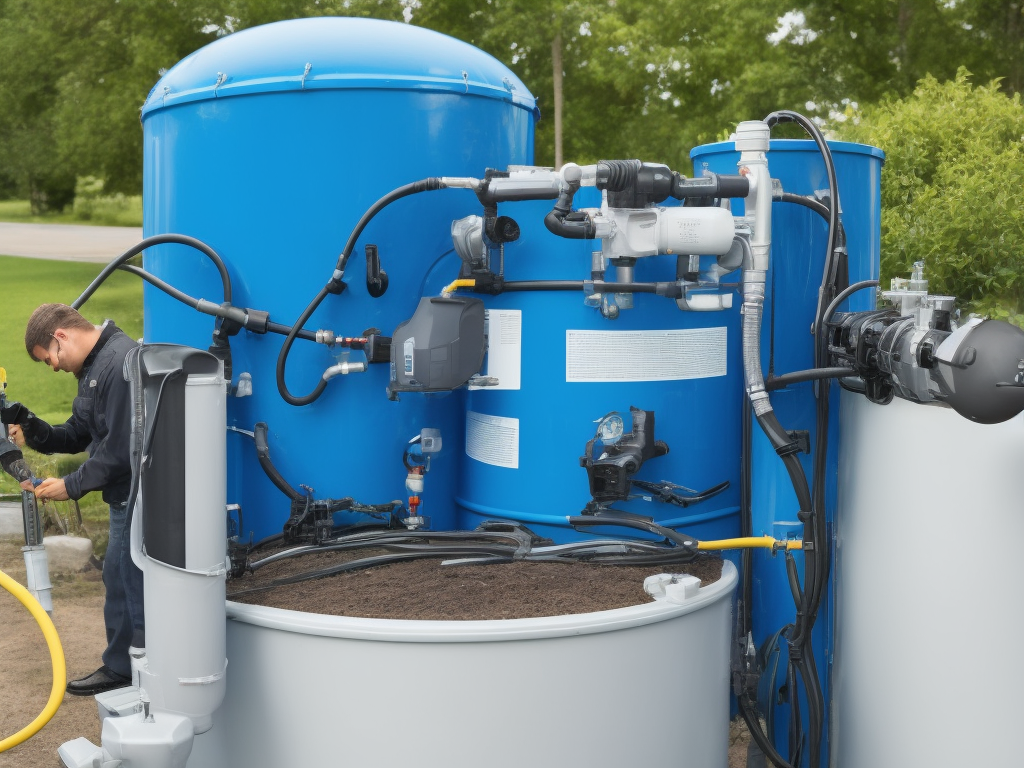As RV enthusiasts, we all know the importance of maintaining a clean and safe water supply during our travels. However, it is not uncommon for RV owners to neglect the proper maintenance of their fresh water tank, which can lead to unpleasant odors and the growth of harmful bacteria.
While draining your RV’s fresh water tank may seem like a daunting task, it is a critical step in ensuring a successful and enjoyable trip.
Some may argue that draining the tank is a tedious and time-consuming process that is not worth the effort. However, the consequences of neglecting this crucial step can be severe. A full tank can significantly affect fuel consumption, reducing your vehicle’s performance and increasing the cost of your trip.
Additionally, carrying excess water can affect your gear carrying capacity, which can be problematic if you’re planning a long trip. In this article, we will provide you with five easy steps to drain your RV’s fresh water tank, which will take around 30 minutes or less.
By following these steps, you can maintain a clean and safe water supply, ensuring a hassle-free and memorable trip.
Why Drain Your Tank?
Draining the RV fresh water tank is an essential process that every RV owner should know. It helps to maintain the quality and safety of the water supply in the tank, prevents the growth of harmful bacteria, and eliminates bad odors that may develop over time. Additionally, a full tank can add significant weight to the RV, affecting its fuel consumption and gear/supply carrying capacity.
By draining the tank regularly, RV owners can ensure that they have access to clean and fresh water while traveling, and avoid any potential health risks associated with contaminated water.
Furthermore, draining the RV fresh water tank is a straightforward process that takes around 30 minutes or less. The first step is to locate the low-point drain valve, which is usually located underneath the RV. Once located, the water heater and pump should be turned off, and all taps and valves should be opened to allow the water to flow out of the tank.
Finally, the valves under the RV should be loosened to facilitate the draining of the water heater. By following these steps, RV owners can effectively drain their fresh water tanks and maintain a safe and healthy water supply while on the road.
Steps to Drain
To maintain water safety and prevent bacteria growth, it is recommended to refresh the RV fresh water tank every 1-2 weeks. A full tank can affect fuel consumption and gear carrying capacity by up to 500 pounds, making it essential to drain the tank regularly.
Here are the steps to drain your RV fresh water tank:
- Find the low-point drain valve and open it to release the water from the tank.
- Turn off the water heater and pump to avoid damage during the draining process.
- Open all taps and valves to let the water flow out of the system.
- Loosen the valves under the RV to allow the water to drain completely.
- Drain the water heater to remove any remaining water.
By following these five easy steps, you can effectively drain the RV fresh water tank in around 30 minutes or less. This process not only maintains water safety and prevents bacteria growth but also helps in managing weight while traveling.
Regularly draining the tank is an essential practice that helps in keeping the RV in good condition and ensures a safe and enjoyable outdoor experience.
Frequency and Effects
The frequency of refreshing the RV’s fresh water supply and the effects of a full tank should be considered when managing weight and fuel consumption during travel. Draining and refreshing the RV’s water tank every 1-2 weeks is recommended when not in a boondocking position. This helps to maintain water safety and prevent the growth of bacteria and bad smells. It also helps to manage weight while traveling, as a full tank can affect fuel consumption and gear/supply carrying capacity.
To better understand the effects of a full tank on weight and fuel consumption, refer to the table below:
| Effect | Weight | Fuel Consumption |
|---|---|---|
| 1 gallon of water | 8.34 lbs | 0.1-0.2 mpg decrease |
| Full 40-gallon tank | 333.6 lbs | 4-8 mpg decrease |
| Half-full 40-gallon tank | 166.8 lbs | 2-4 mpg decrease |
| Empty 40-gallon tank | 0 lbs | No effect on fuel consumption |
| Full 80-gallon tank | 667.2 lbs | 8-16 mpg decrease |
As shown in the table, a full 40-gallon tank can lead to a decrease in fuel consumption by 4-8 mpg. This can be significant, especially during long trips. It is important to consider the weight of the water in the tank and manage it accordingly to ensure safe and efficient travel.

